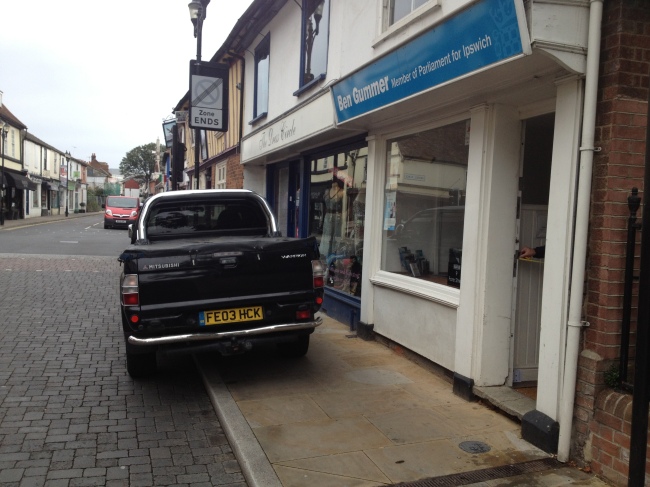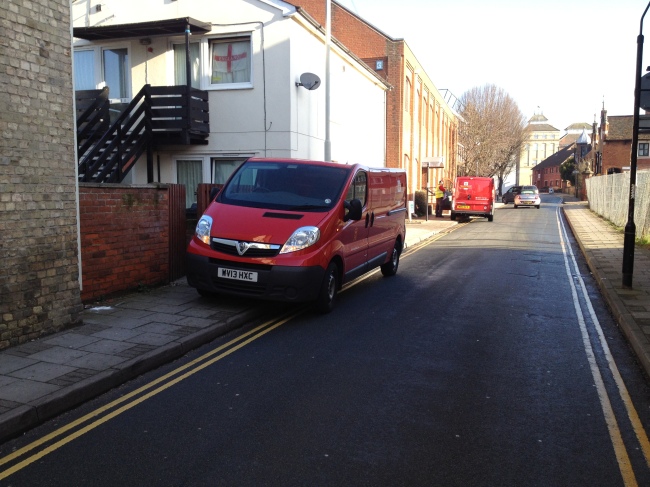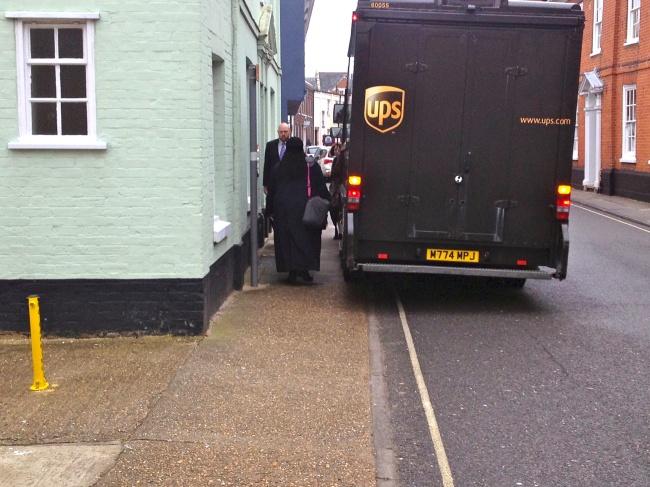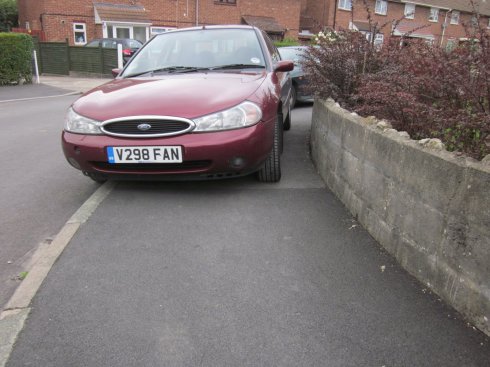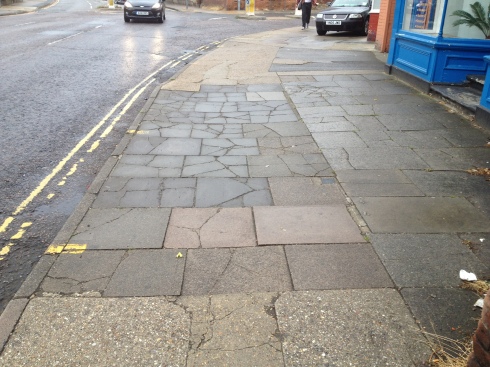I promised to post a photo showing how carefully these socially-minded fitters from Express Glass had created a safe route for pedestrians around their vehicle when while they fitted a heavy plate-glass window to this shop in central Ipswich. They seemed surprised when I said that I found this level of consideration and awareness of the law and the Highway Code unusual.
Many other businesses who should know better seem to see what they can get away with… 24 hours earlier I had spotted fitters from another glass company, who were installing a window in our local MP’s office, and who didn’t seem to have gone to any great effort to accommodate the needs of pedestrians. Possibly the staff in Ben Gummer’s office could have said something?
And this was not a one-off, here are another set of workmen with a large vehicle up on the pavement outside his office.
Needless to say, it is MPs who create the laws, and people who break the laws may end up being taken to court in one of these vans. It does seem a bit ironic then that Serco park up on the pavement outside the back of Ipswich Magistrates’ Court on double-yellows in a no-loading zone. They do this regularly, and the receptionist explained that traffic warden has given them permission to do it. Doesn’t exactly send a good message to wrong-doers does it!
And of course yellow Lines don’t just appear by magic, they need to be painted onto the road by people who drive heavy lorries like this ones. Seems ironic then that they have chosen to park it up on the pavement across a cycle lane on a section of double yellows in a no-loading zone. Possibly they shouldn’t bother painting them at all?
Speaking of double yellow lines, privatized of the Royal Mail by our MPs has regrettably not stopped their staff from blocking pavements on a regular basis. In this picture we have not one, but two Royal Mail vans blocking the same pavement which takes some skill! When I ask them to not do this, they typically point to the royal crest and say that they are on queen’s business. Needless to say, they no longer serve the queen, and unfortunately I can’t see anything much that is ‘royal’ about them any more.
Privatisation of mail delivery was of course designed to create competition which is good and drives down prices and gives choice. One unfortunate expression of this competitions seems to be for these companies to attempt to deliver fastest with fewer drivers in larger vehicles (where did postman Pat and his bike go?) and explore which laws can be ignored in pursuit of profit. Here is a very large TN lorry up on the pavement on yellow lines in a busy city-centre street.
And it’s not just TNT – here are UPS delivering to an address in the same street, one which happens be a major pedestrian route between the town centre and the waterfront. Notice the muddle of people trying to pass each other on the bit of remaining pavement. This particular driver appears however to take pleasure in ignoring all requests to be more considerate, and has reassured me that ‘he has never got a ticket’.
Needless to say, police forces are not always that keen on enforcing the law, as in this famous case where the police in Bristol apparently deemed that this car, parked fully across the pavement on a bend was not causing an obstruction!
What really worries me however, is when I saw this milkman parking up on pavements on double yellows just as kids are on their way to school. He evidently choose to avoid the hassle of driving all the way into the free car park visible in the left of the picture because it was more convenient for him to simply dump his vehicle on the pavement.
All of the above seems to confirm that authority has no great interest in pedestrians and their needs. The people who make the laws don’t seem to be too worried about them, nor are the people paid to implement the related regulations, nor are those employed to deal with people who break the other law interested in obeying them. Creating a competitive market for deliveries in these conditions only increases the chaos, where competing companies are incentivised, indeed almost compelled, to see which laws are optional in pursuit of greater profits!
To be continued….


